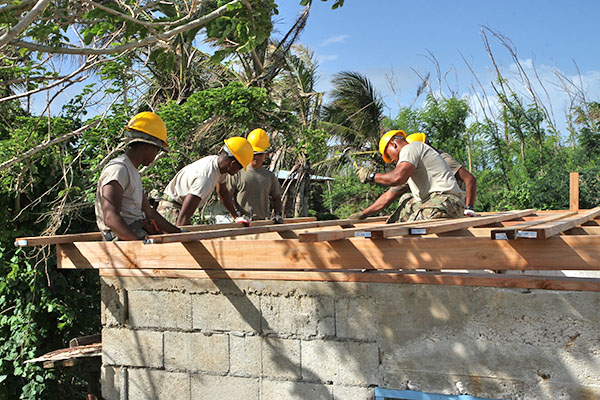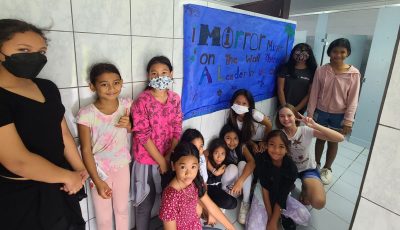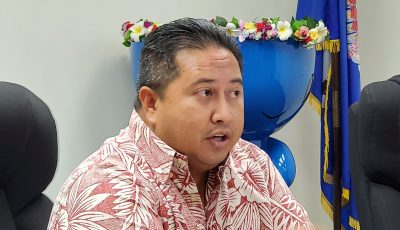FEMA looks to harden CNMI infrastructure

U.S. Army Soldiers with the 797th Engineer Company (Vertical), 9th Mission Support Command, currently assigned to Joint Task Group-Saipan, Task Force-West, work together to build a roof for a Kgman resident last Dec. 6, 2018. (STAFF SGT. JAMES KENNEDY BENJAMIN)
The Federal Emergency Management Agency is looking at all available options to help the CNMI harden its critical infrastructure, including schools, to avoid another disruption of classes after a typhoon.
Most of the schools in the southern side of Saipan were heavily damaged by Super Typhoon Yutu, with Hopwood Middle School among those that need extensive repairs, disrupting class schedules for more than a month. Schools only resumed classes last Dec. 3 and yesterday.
The other schools that also need extensive repairs are the Dandan Middle School, Da’ok Academy, Francisco M. Sablan Middle School, Hopwood Middle School, Oleai Elementary School, San Vicente Elementary School, and William S. Reyes Elementary School.
Select schools—Gregorio T. Camacho Elementary School, Garapan Elementary School, Kagman Elementary School, Tanapag Middle School, Da’ok Academy, Kagman High School, and Chacha Oceanvie Middle School—will have full-day class sessions, while Oleai Elementary School, William S. Reyes Elementary School, Koblerville Elementary School, San Vicente Elementary School, Dandan Middle School, and Francisco M. Sablan Middle School will have double sessions: morning and afternoon classes.
FEMA Region IX administrator Robert “Bob” Fenton Jr., who was on island last week to check on the recovery efforts’ progress, told Saipan Tribune that various federal agencies are working with their local counterparts right now to get the islands back to its normal state.
“We’re prioritizing in getting the power back to 100 percent on the islands, including 24-hour water distribution. We’re also helping in the reconstruction of houses that lost their roofing while also giving out rental and other monetary assistance to the people who need it most,” he said.
“We’re also working on providing a central location for those who still need to stay in a shelter since [classes] are now back on Saipan. We’re working with the U.S. Army Corps of Engineers in providing tents.”
He sees a long-term recovery effort to rebuild destroyed homes and other structures on Saipan and Tinian. “We need to…harden the structures…to build and prepare for future typhoons.”
“We won’t just build and repair hastily. …FEMA will be working to get extra funds…to harden all critical infrastructures so there won’t be any interruptions in the future.”
Disposal of hazardous wastes and other typhoon-related debris is still being done with the U.S. Environmental Protection Agency to avoid health risks to the public and the environment.
Household debris like broken electrical appliances will be shipped off-island through a barge while wood and other green wastes can be burned. Tin roofing would be recycled. Fenton is encouraging the public to recycle materials to avoid overfilling the landfill.


























